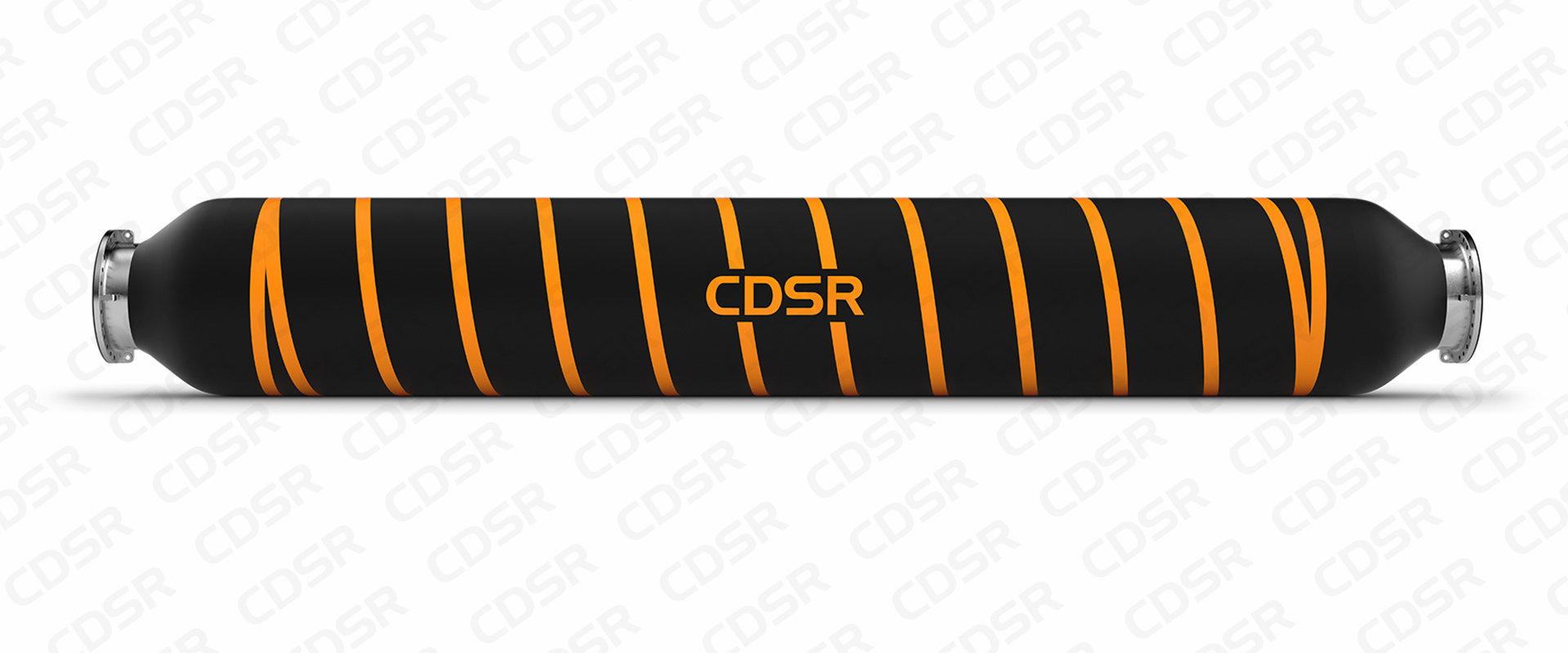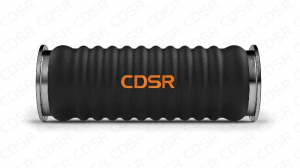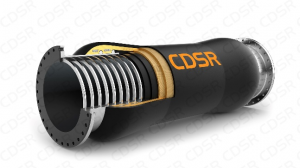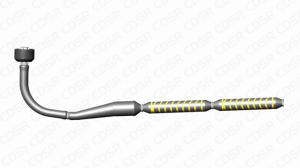د لامبو وهلو فولادي پایپ (لامبو وهلو پایپ / د ډریجنګ پایپ)
جوړښت او مواد
A د فولادو لامبو وهونکی پایپد فولادو پایپ، فلوټیشن جاکټ، بهرنۍ پوښ او په دواړو سرونو کې فلانجونو څخه جوړ شوی دی. د فولادو پایپ اصلي مواد Q235، Q345، Q355 یا ډیر د اغوستلو مقاومت لرونکي الیاژ فولاد دي.

ځانګړتیاوې
(۱) د ښه کلکوالي سره، مستقیم پایپ ښه نرمښت تضمینوي.
(2) د ښه اغوستلو مقاومت سره.
(۳) استر د ټیټ رګیدو ضریب سره، ټیټ لیږد مقاومت.
(۴) د کاري فشار درجه بندي نسبتا پراخه لړۍ.
(۵) د لوړ کشش او سختۍ سره.
(6) د ښه لامبو وهلو فعالیت سره، کولی شي د کاري شرایطو لاندې په اوبو کې تیر شي.
(۷) د ښه کاري ثبات او د بادونو او څپو په وړاندې ښه مقاومت سره.
تخنیکي پیرامیټرې
| (۱) نومیالي بور اندازه | ۵۰۰ ملي متره، ۶۰۰ ملي متره، ۷۰۰ ملي متره، ۷۵۰ ملي متره، ۸۰۰ ملي متره، ۸۵۰ ملي متره، ۹۰۰ ملي متره، ۱۰۰۰ ملي متره، ۱۱۰۰ ملي متره، ۱۲۰۰ ملي متره |
| (۲) د پایپ اوږدوالی | ۶ متره ~ ۱۱.۸ متره (زغم: +۵۰ ملي متره) |
| (۳) کاري فشار | ۲.۵ MPa ~ ۳.۰ MPa |
| (۴) د غوړېدو کچه | SG ۱.۸ ~ SG ۲.۳ |
| * دودیز مشخصات هم شتون لري. | |
غوښتنلیک
دد فولادو لامبو وهونکی پایپپه عمده توګه په لامبو وهونکو پایپ لاینونو کې کارول کیږي. د فولادو پایپ د ځانګړتیاو له امله، دا نشي تاویدلی، د لامبو وهونکو فولادو پایپونه باید په پایپ لاین کې د ربړ نلیونو سره په بدیل سره وصل شي ترڅو پایپ لاین د کارولو پرمهال تاو شي. لامبو وهونکو فولادو پایپ د باد او څپو په وړاندې ښه مقاومت لري، مګر په ورته وخت کې، لکه څنګه چې په پایپ لاین کې نرمې اړیکې د لامبو وهونکو فولادو پایپونو او ربړ نلیونو څخه جوړې شوي دي، د ربړ نلیونه معمولا لوی زاویې ته نه تاویږي، او د هر ربړ نلی د خمیدو زاویه باید په مناسب حد کې وي، ترڅو ډاډ ترلاسه شي چې ټوله پایپ لاین نرم او بې خنډه دی. له همدې امله، د پایپ لاین ترتیب خورا مهم دی، او دا به غوره وي که چیرې پایپ لاین په نسبتا نرم چاپیریال کې وکارول شي، ترڅو د ربړ نلیونه د ډیر خمیدو څخه مخنیوی وشي چې د قوي بادونو او لویو څپو له امله رامینځته کیږي، او د عادي فعالیت ناکامي لامل کیږي.
که چیرې عملیات د قوي بادونو او لویو څپو په چاپیریال کې ترسره شي، کوم چې لامبو وهونکی نلی مقاومت کولی شي، نو پدې حالت کې د حل په توګه د فلوټینګ فولادو پایپونو څخه جوړ شوی پایپ لاین چې د لامبو وهونکي نلی سره وصل وي هم په پام کې نیول کیدی شي. د دې لګښت د فلوټینګ فولادو پایپونو او ربړ نلیونو ترکیب په پرتله لوړ دی، نو دا عموما د لومړي انتخاب په توګه نه وړاندیز کیږي.
دد فولادو لامبو وهونکی پایپد لوړ لیږد ظرفیت لري او کولی شي د ډریجنګ پروژو کې هر ډول میټریلونه انتقال کړي. دا نه یوازې د اوبو (یا سمندري اوبو)، سلټ، خټې او شګو مخلوطونه لیږدولی شي، چې د ځانګړي جاذبې له مخې له 1.0 g/cm³ څخه تر 2.0 g/cm³ پورې وي، بلکې د اوبو (یا سمندري اوبو)، جغل، فلیکي هوا لرونکي ډبرې او مرجان ریف مخلوطونه هم لیږدولی شي، چې د ځانګړي جاذبې له مخې له 1.0 g/cm³ څخه تر 2.3 g/cm³ پورې وي.


د CDSR فلوټینګ ډیسچارج هوزونه په بشپړ ډول د ISO 28017-2018 "د ربړ هوزونه او د نلی اسمبلۍ، تار یا ټوکر تقویه شوي، د ډریج کولو غوښتنلیکونو لپاره - مشخصات" او همدارنګه HG/T2490-2011 اړتیاو سره مطابقت لري.

د CDSR پایپونه د ISO 9001 سره سم د کیفیت سیسټم لاندې ډیزاین او تولید شوي.





 中文
中文







